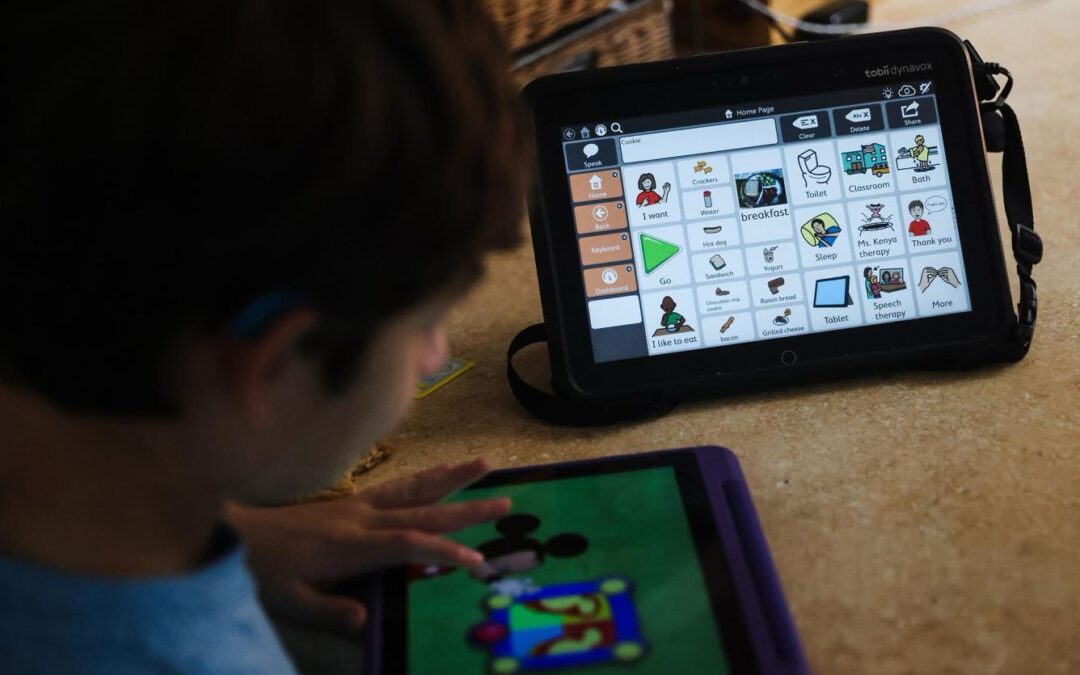By Shaun Heasley
DisabilityScoop.com
Physicians are being told to play a bigger role in ensuring that children with disabilities have access to needed augmentative and alternative communication technologies.
In a clinical report out this month, the American Academy of Pediatrics is highlighting the steps that the nation’s pediatricians should take to connect kids with complex communication needs to assistive devices. These can range from low-tech options like communication boards to high-tech options that rely on a tablet or computer, including those that can be controlled by eye blinks or brain waves.
Communication impairments can present in children with cerebral palsy, autism, congenital anomalies, deafness, intellectual disabilities, brain injuries, severe speech disorders like dyspraxia and childhood apraxia of speech, as well as genetic syndromes such as Down syndrome or Rett syndrome, according to the guidance.
Research supports the benefits of early intervention for speech and language issues, the pediatrics group indicates, which can include augmentative systems like pictures or sign language. More complex devices have been used with children as young as 9 months.
Importantly, the guidance highlights that using augmentative and alternative communication systems, or AAC, “does not decrease the use of natural speech and may promote an increase in verbal expression expertise, which should provide reassurance to physicians and families.”
Despite the benefits, the pediatrics group notes that about a quarter of caregivers of children with communication impairments report unmet need.
“Children at any age who are nonverbal or have unreliable intelligible speech are potential candidates for AAC,” the clinical report states. “Knowing appropriate community resources and professionals for assistive technology is crucial.”
Pediatricians are urged to screen children for communication problems, refer them if needed for an assessment with a speech language pathologist, prescribe devices and sign letters of medical necessity. Doctors should also work with schools and outside therapists and empower parents to push for school-provided communication devices to come home with their child.
In addition, the pediatrics group recommends that its members advocate for Medicaid and other insurers to cover the cost of AAC devices and associated care.
The guidance comes just months after researchers from the Children’s Hospital Los Angeles presented findings at two conferences suggesting that too few families of minimally verbal children are familiar with augmentative and alternative communication devices.
Survey findings from 106 parents of minimally verbal children with autism showed that 84% of those who were white had access to an AAC device versus 32% of racial and ethnic minority families. More than half of minorities surveyed indicated that they had no knowledge of AAC devices.
“These are striking numbers,” said Charlotte DiStefano, lead psychologist for autism and neurodevelopmental services at Children’s Hospital Los Angeles and the principal investigator of the study.
“These devices can make a significant impact on a child’s life,” she said. “My guess is that everyone thinks someone else is informing the family.”

Recent Comments